
A bilevel car or double-decker coach is a type of rail car that has two levels of passenger accommodation as opposed to one, increasing passenger capacity.
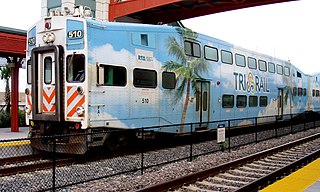
Tri-Rail is a commuter rail service linking Miami, Fort Lauderdale and West Palm Beach in Florida, United States. The Tri prefix in the name refers to the three counties served by the railroad: Palm Beach, Broward, and Miami-Dade. Tri-Rail is managed by the South Florida Regional Transportation Authority (SFRTA) along CSX Transportation's former Miami Subdivision; the line is now wholly owned by the Florida DOT. The 80.0-mile-long (128.7 km) system has 19 stations along the Southeast Florida coast, and connects directly to Amtrak at numerous stations, to Metrorail at the Metrorail Transfer station, Miami Airport station, and MiamiCentral, and to Brightline at MiamiCentral.
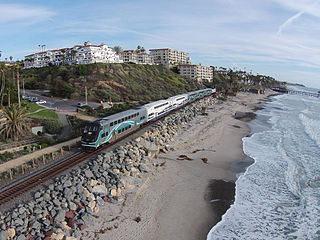
Metrolink is a commuter rail system in Southern California, serving Los Angeles, Orange, Riverside, San Bernardino, and Ventura counties, as well as to Oceanside in San Diego County. The system consists of eight lines and 69 stations operating on 545.6 miles (878.1 km) of track. Arrow is operated under a contract with the San Bernardino County Transportation Authority (SBCTA).

Hyundai Rotem is a South Korean company that manufactures rolling stock, defense products and plant equipment. It is a part of the Hyundai Motor Group. Its name was changed from Rotem to Hyundai Rotem in December 2007 to reflect the parent company. It is also called Hyundai Railroad Technology Systems.

The MBTA Commuter Rail system serves as the commuter rail arm of the Massachusetts Bay Transportation Authority's (MBTA's) transportation coverage of Greater Boston in the United States. Trains run over 394 mi (634 km) of track to 134 stations. It is operated under contract by Keolis, which took over operations on July 1, 2014, from the Massachusetts Bay Commuter Railroad Company (MBCR).

Commuter rail services in the United States, Canada, Cuba, Mexico, Panama, and Costa Rica provide common carrier passenger transportation along railway tracks, with scheduled service on fixed routes on a non-reservation basis, primarily for short-distance (local) travel between a central business district and adjacent suburbs and regional travel between cities of a conurbation. It does not include rapid transit or light rail service.

The BiLevel Coach is a bilevel passenger railcar currently built by Alstom and previously by Bombardier, Hawker Siddeley Canada, the Canadian Car and Foundry, and the UTDC. Used by North American commuter rail operators, they hold 360 passengers and feature a distinctive octagonal profile.
Push–pull is a configuration for locomotive-hauled trains, allowing them to be driven from either end of the train, whether having a locomotive at each end or not.

The Westside Express Service (WES) is a commuter rail line in the U.S. state of Oregon serving parts of Washington and Clackamas counties in the Portland metropolitan area. Owned by TriMet and operated by Portland & Western Railroad (P&W), the line is 14.7 miles (23.7 km) long and travels north–south from Beaverton to Wilsonville along a route just west of Oregon Highway 217 and Interstate 5 (I-5). WES consists of five stations and connects with MAX Light Rail at Beaverton Transit Center. Service operates on a 45-minute headway on weekdays during the morning and evening rush hours. In Spring 2022, WES saw a daily ridership of 420 passengers or about 109,000 riders annually.
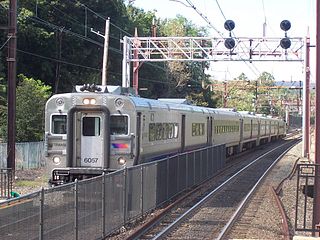
The Comet railcar is a class of locomotive-hauled railcars that was first designed in the late 1960s by Pullman-Standard as a modern commuter car for North American rail lines. Later, the Comet moniker was adopted by NJ Transit for all of its non-powered single level commuter coaches. Additional series of cars bearing the Comet name, based on the original design, have since been built by Bombardier Transportation and Alstom. The successful design was adopted by numerous commuter agencies.
Colorado Railcar was a manufacturer of railroad rolling stock—railcars and diesel multiple unit commuter vehicles. Both products came in single- and double-level versions. It shut down in 2008, with its assets being purchased by US Railcar.
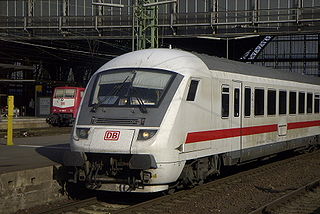
A control car, cab car, control trailer, or driving trailer is a non-powered rail vehicle from which a train can be operated. As dedicated vehicles or regular passenger cars, they have one or two driver compartments with all the controls and gauges required to remotely operate the locomotive, including exterior locomotive equipment such as horns, bells, ploughs, and lights. They also have communications and safety systems such as GSM-R or European Train Control System (ETCS). Control cars enable push-pull operation when located on the end of a train opposite its locomotive by allowing the train to reverse direction at a terminus without moving the locomotive or turning the train around.

The Kawasaki Railcar Manufacturing Company is the Japanese rolling stock manufacturing subsidiary of Kawasaki Heavy Industries. Since beginning operations in 1906, the company has produced more than 90,000 railroad cars.
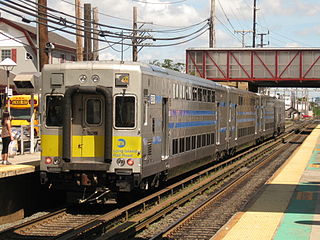
The C3 is a bi-level coach railroad car built by Kawasaki. Ordered by the Metropolitan Transportation Authority for use on the Long Island Rail Road (LIRR), the cars began to enter revenue service in 1997. The rail cars are pulled and pushed by EMD DE30AC and DM30AC dual-mode locomotives. The C3 cars are powered by 480 V AC head-end power supplied from the locomotive.

The HRCS2 Hyundai Rotem is a dual-voltage electric multiple unit built by Hyundai Rotem for the Ukrainian Railways.

The California Car is the first generation of intercity railcars owned by the California Department of Transportation (Caltrans) and operated by Amtrak under the Amtrak California brand on intercity corridor routes in Northern and Central California. The cars were built in the mid-1990s for the Caltrans Division of Rail by Morrison–Knudsen and the American Passenger Rail Car Company (Amerail). The cars are similar in exterior dimensions to Amtrak's Superliner, but original in design to provide rolling stock suitable for California intercity services up to six hours, with more frequent stops than most other Amtrak routes. All cars were overhauled by Alstom at its Mare Island facility between 2009 and 2012.

The 2015 Oxnard train derailment occurred on February 24, 2015, at 5:44 a.m. local time when a Metrolink passenger train collided with a truck that a driver had mistakenly turned from Rice Avenue onto the tracks and became stuck. After impact, the train derailed at Oxnard, California, United States. As a result of the crash, the train engineer died from his injuries a week later and 32 passengers and crew members were injured. The truck driver exited his vehicle and ran from the scene prior to the crash; he sustained minor injuries that were unrelated to the crash sequence.

Metrolink, the commuter rail system serving Southern California, operates a fleet of passenger train rolling stock consisting of 60 locomotives, 137 active Bombardier BiLevel Coaches, and 137 Rotem Commuter Cars. Operation of the weekday train schedule requires 36 locomotives to be operational.
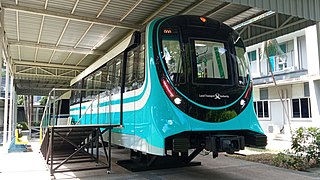
The Hyundai Rotem J151 is the first generation electric multiple unit rolling stock to be introduced on the Jurong Region Line of Singapore's Mass Rapid Transit (MRT) system, manufactured by Hyundai Rotem under Contract J151. 62 three-car medium-capacity Hyundai Rotem trainsets will be delivered from 2024 onwards and service will commence when the line opens in 2027.

The Colorado Railcar DMU is a diesel multiple unit train that was manufactured by Colorado Railcar from 2002 to 2008. The DMU was offered in single-level and bi-level versions. The DMU was discontinued after Colorado Railcar shut down in 2008.




















